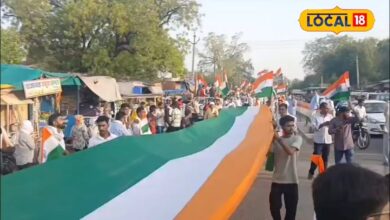Rajasthan
No hallmarking for Rajasthan’s Kundan Meena jewellery | Jaipur News

JAIPUR: The state’s signature Kundan Meena jewellery has been kept out of the ambit of mandatory hallmarking, the guidelines for which were issued by the Centre on Wednesday, even as the new norms remain silent on antique jewellery in which the purity of gold plays a lesser role in the determination of price.
The Centre had issued the guidelines for hallmarking gold jewellery and artefacts to ensure assured quality for consumers.
Instead of rolling it out across the country, now hallmarking will be mandatory in 56 districts which have assaying and hallmarking (A&H) centres. In Rajasthan, hallmarking has been made mandatory in 18 districts.
For consumers, hallmarking assures that they are not shortchanged and get quality product.
Kailash Mittal, president of Jaipur Sarafa Traders Association, said, “Hallmarking will improve the confidence of people in investing in gold or jewellery. This will also benefit the trade. So, it is a win-win situation for both.”
When it comes to people wanting to sell their household jewellery, they are not required to get them hallmarked.
However, Rajiv Jain, former chairman of the Gold and Jewellery Exports Council, said that the guidelines were silent on antique jewellery.
“A committee has been formed to further advise the government on remaining issues. So, we expect a decision on antique jewellery as well. Antique jewellery cannot be melted and made into a different product,” he said.
The Centre has considered the case of Kundan Meena and Polki jewellery and put them outside the mandatory hallmarking requirement, he said.
“Rajasthan enjoys a special identity for the centuries-old art of Kundan Meena jewellery. These products have increased the brand equity of the city as a hub for jewellery. Gold with multiple carats are used in Kundan Meena jewellery. That’s why it is difficult to hallmark it and the Centre has considered it before keeping it outside the hallmark ambit,” said Jain.
He pointed to some jewellery products where hallmarking was difficult. He cited the example of Thewa art of jewellery making which involves fusing intricately woven sheet gold on molten glass. It evolved in Pratapgarh district and its origin dates back to the Mughal age.
“It’s so thin that it would be hard to get it hallmarked. There are other designs and art forms for which the hallmarking norms would be a challenge. But the rules will also evolve as new issues crop up. But it’s a good move to have hallmarking,” he said.
Some said that hallmarking would leave a trail of transaction which can be tracked for tax purposes or income disclosure by income tax authorities.
The Centre had issued the guidelines for hallmarking gold jewellery and artefacts to ensure assured quality for consumers.
Instead of rolling it out across the country, now hallmarking will be mandatory in 56 districts which have assaying and hallmarking (A&H) centres. In Rajasthan, hallmarking has been made mandatory in 18 districts.
For consumers, hallmarking assures that they are not shortchanged and get quality product.
Kailash Mittal, president of Jaipur Sarafa Traders Association, said, “Hallmarking will improve the confidence of people in investing in gold or jewellery. This will also benefit the trade. So, it is a win-win situation for both.”
When it comes to people wanting to sell their household jewellery, they are not required to get them hallmarked.
However, Rajiv Jain, former chairman of the Gold and Jewellery Exports Council, said that the guidelines were silent on antique jewellery.
“A committee has been formed to further advise the government on remaining issues. So, we expect a decision on antique jewellery as well. Antique jewellery cannot be melted and made into a different product,” he said.
The Centre has considered the case of Kundan Meena and Polki jewellery and put them outside the mandatory hallmarking requirement, he said.
“Rajasthan enjoys a special identity for the centuries-old art of Kundan Meena jewellery. These products have increased the brand equity of the city as a hub for jewellery. Gold with multiple carats are used in Kundan Meena jewellery. That’s why it is difficult to hallmark it and the Centre has considered it before keeping it outside the hallmark ambit,” said Jain.
He pointed to some jewellery products where hallmarking was difficult. He cited the example of Thewa art of jewellery making which involves fusing intricately woven sheet gold on molten glass. It evolved in Pratapgarh district and its origin dates back to the Mughal age.
“It’s so thin that it would be hard to get it hallmarked. There are other designs and art forms for which the hallmarking norms would be a challenge. But the rules will also evolve as new issues crop up. But it’s a good move to have hallmarking,” he said.
Some said that hallmarking would leave a trail of transaction which can be tracked for tax purposes or income disclosure by income tax authorities.




